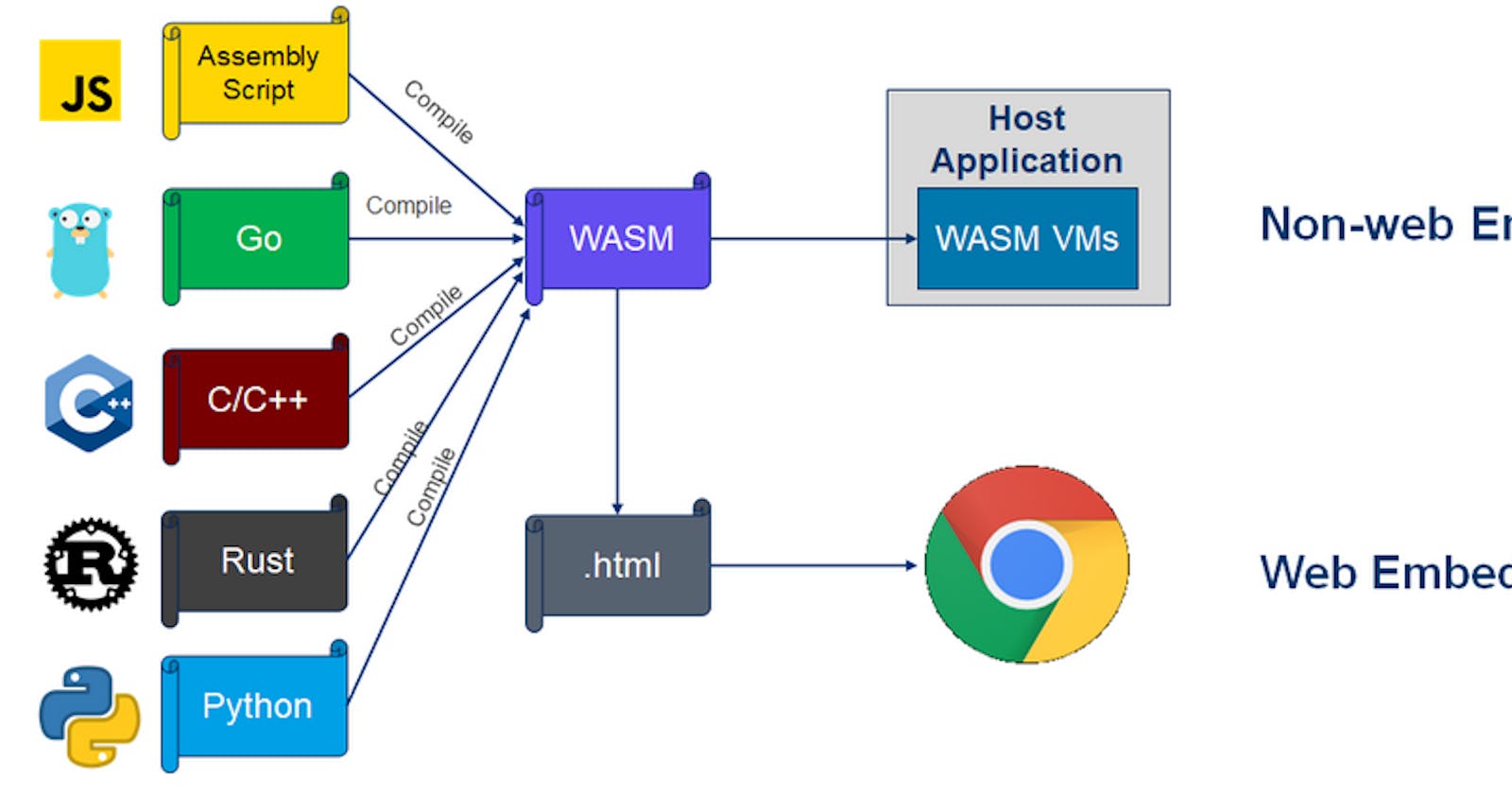WebAssembly (Wasm) is a low-level, binary instruction format for a stack-based virtual machine that is designed to run in modern web browsers. It is an open standard and is supported by all modern web browsers, including Google Chrome, Mozilla Firefox, and Microsoft Edge.
One of the main benefits of WebAssembly is that it allows developers to write code in languages other than JavaScript, such as C++ or Rust, and run that code in the browser. This can be especially useful for developers who are more comfortable with these languages, or for applications that require the performance and capabilities that these languages provide.
WebAssembly is designed to be fast and efficient, and it is able to run in the browser at near-native speeds. This is because WebAssembly is compiled ahead of time (AOT) and is optimized for the specific hardware and operating system it is running on. This makes it a good choice for applications that require high performance, such as games or video processing.
WebAssembly is also designed to be secure, as it runs in a sandboxed environment and is isolated from the rest of the web page. This makes it a good choice for applications that require a high level of security, such as online banking or cryptocurrency exchanges.
To understand how WebAssembly works, it is helpful to have a basic understanding of how the web works. When a user visits a web page, their browser sends a request to a web server for the content of the page. The server then responds with the content of the page, which is usually in the form of HTML, CSS, and JavaScript.
The browser then renders the HTML to display the structure of the page, applies the CSS to style the page, and runs the JavaScript to add interactivity and functionality to the page. This is how a web page is able to display content, accept input from the user, and perform actions in response to that input.
WebAssembly works by running in the same environment as JavaScript, but it is designed to be a low-level, efficient alternative to JavaScript. It is compiled ahead of time and runs in a binary format, which means that it is faster and more efficient than JavaScript, which is interpreted at runtime.
WebAssembly is also designed to be interoperable with JavaScript, which means that it is possible to call JavaScript functions from WebAssembly code and vice versa. This allows developers to use the strengths of both languages to build applications that are fast, efficient, and easy to maintain.
To use WebAssembly in a web application, developers first need to compile their code into the WebAssembly binary format. This can be done using a tool such as Emscripten, which is an open-source compiler that converts C++ code into WebAssembly.
Once the code has been compiled into WebAssembly, it can be loaded into a web page and run in the same way that JavaScript is loaded and run. This is done using the WebAssembly JavaScript API, which provides functions for loading and running WebAssembly code in the browser.
In summary, WebAssembly is a low-level, binary instruction format for a stack-based virtual machine that is designed to run in modern web browsers. It allows developers to write code in languages other than JavaScript and run that code in the browser, and it is fast, efficient, and secure. WebAssembly is also interoperable with JavaScript, which makes it a powerful tool for building high-performance web applications.
